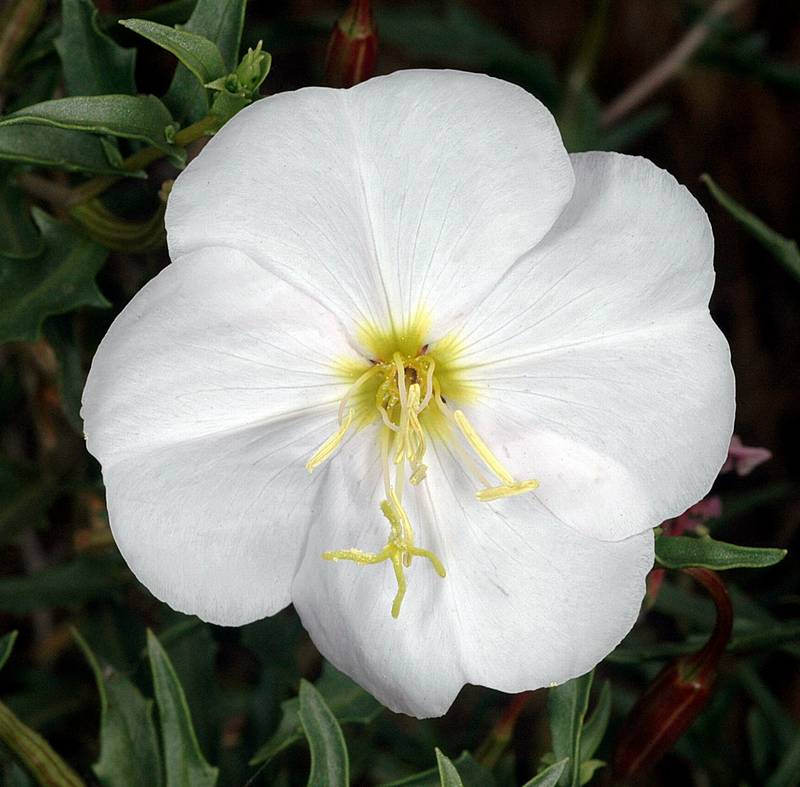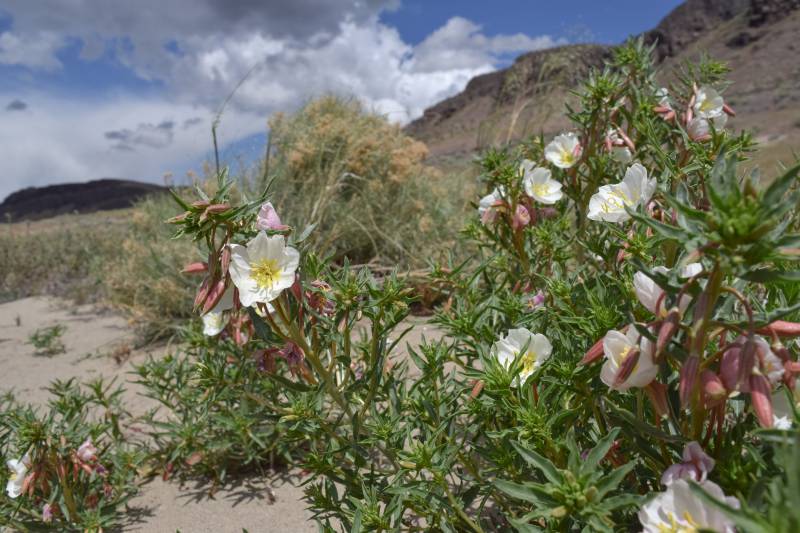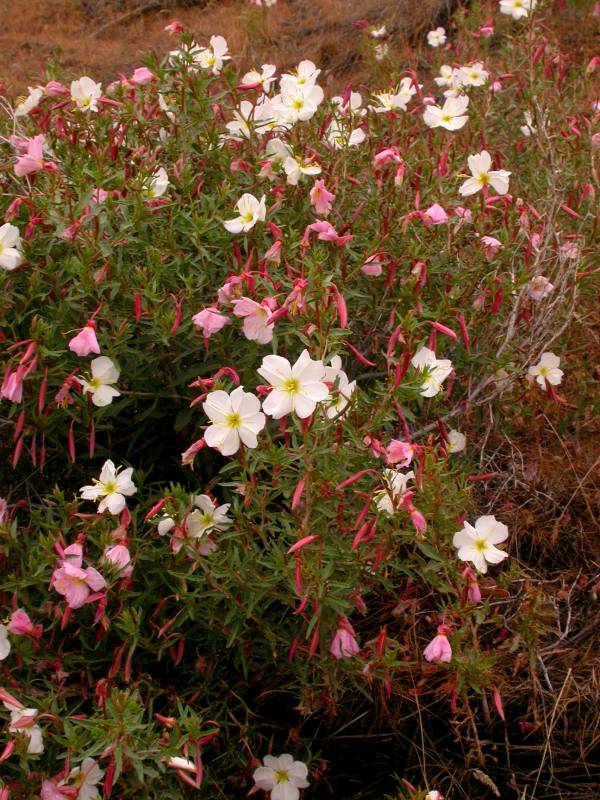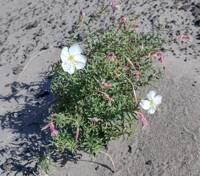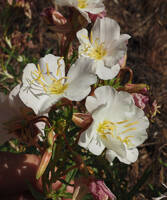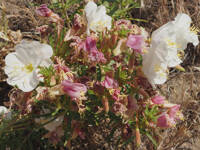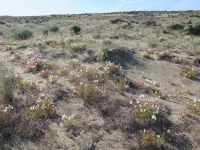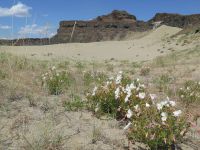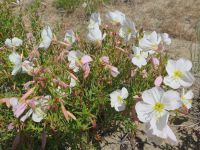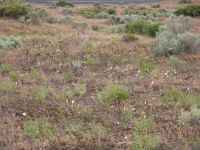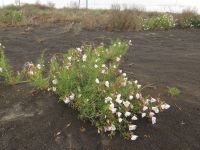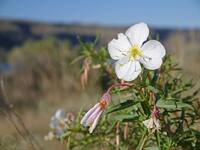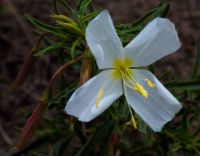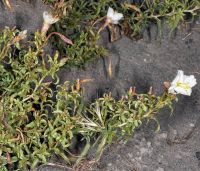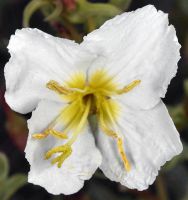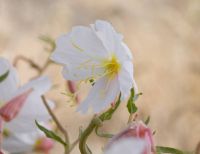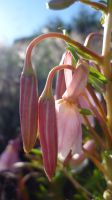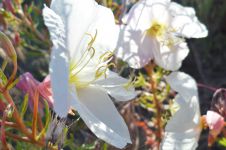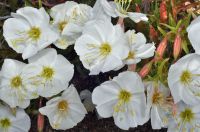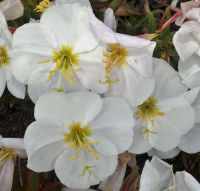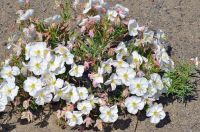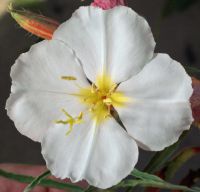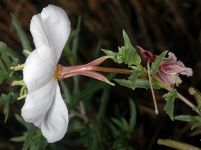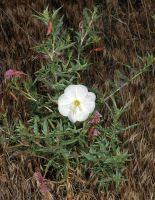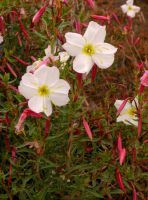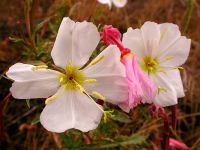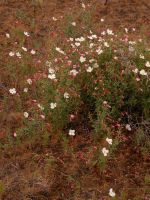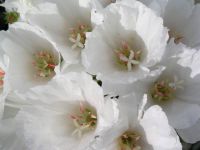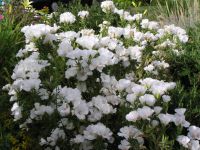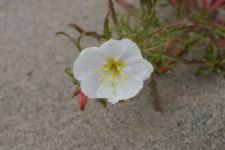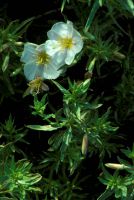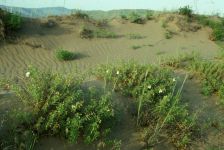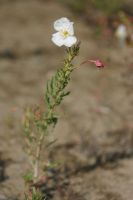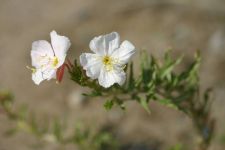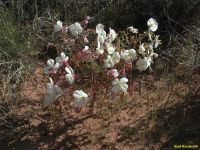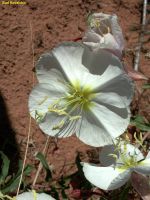Distribution: Occurring east of the Cascades crest in Washington; British Columbia to Arizona, east to the Rocky Mountains and Texas.
Habitat: Dry, sandy or gravelly soil, commonly on dunes at low elevations.
Flowers: May-July (September-October)
Origin: Native
Growth Duration: Biennial, Perennial
Conservation Status: Not of concern
Pollination: Bees, moths
Rhizomatous perennial with whitish bark, the stems 1-5 dm. tall, simple or freely-branched basally, very leafy, glabrous or grayish with appressed hairs.
Leaves alternate, liner to liner-lanceolate, 2-6 cm. long and up to 5 mm. broad, entire to serrate, occasionally with 1 or more basal lobes, narrowed to broad petioles 5-15 mm. long.
Flowers fragrant, in leafy spikes, the buds nodding; calyx tube 1.5-3.5 cm. long, pink to purplish, the 4 lobes reflexed, 1-4 cm. long, fused and turned to one side; petals 1.5-3 cm. long, white, aging pinkish, obovate; stamens 8, equal to the petals; stigma with 4 linear lobes 4-6 mm. long; ovary inferior, 4-celled.
Capsule liner, 2-3 mm. thick at the base, tapering to the tip, 1.5-3.5 cm. long, arched.
Publication: Bot. Reg. 14: t. 1142. 1828.
-
ssp. pallida – pale evening primrose
 Occurring east of the Cascades crest in Washington; British Columbia to Arizona, east to the Rocky Mountains and Texas.
Occurring east of the Cascades crest in Washington; British Columbia to Arizona, east to the Rocky Mountains and Texas.
PNW Herbaria: Specimen records of Oenothera pallida in the Consortium of Pacific Northwest Herbaria database.
WA Flora Checklist: Oenothera pallida checklist entry.
OregonFlora: Oenothera pallida information.
E-Flora BC: Oenothera pallida atlas page.
CalPhotos: Oenothera pallida photos.
USDA Plants: Oenothera pallida information.

